Toyger: Cat Breed Profile, Characteristics & Care
The toyger (toy tiger) is a medium-sized, tiger-spotted, exceptionally rare short-haired cat that was developed in the United States in the 1980s and remains one of the newest, most unique-looking cat breeds.
Much of the toyger's appeal lies in their wild tiger-like appearance while being a domesticated cat. The toyger is a designer breed that's a playful, intelligent cat.
Learn more about the history, characteristics, and care of the toyger cat.
Breed Overview
Other Names: Toy Tiger
Personality: Friendly
Weight: 7 to 15 pounds
Length: About 18 inches
Coat Length: Short hair
Coat Colors: Orange, black, and white
Coat Patterns: Tabby
Eye Color: Usually ranging from dark brown to hazel
Lifespan: 10 to 15 years
Hypoallergenic: No
Origin: United States
Toyger Cat Characteristics
The toyger is a friendly, easygoing cat with an ideal temperament and personality. Toygers make great additions to families with children or pets, and are ready to play and offer affection.
If you're looking for a below-average amount of commitment to exercising your cat, the toyger's energy level may not be for you. Their intelligence makes them susceptible to boredom, so playtime is essential. Toygers are trainable and can be taught to do tricks.
| Affection Level | High |
| Friendliness | High |
| Kid-Friendly | Medium |
| Pet-Friendly | High |
| Exercise Needs | High |
| Playfulness | High |
| Energy Level | High |
| Intelligence | High |
| Tendency to Vocalize | High |
| Amount of Shedding | High |
History of the Toyger Cat
In the 1980s, breeder Judy Sugden (daughter of the original Bengal cat breeder, Jean Mill) worked with mackerel tabbies—cats characterized by their wild stripes and an "M" shaped marking on their foreheads.
Sugden noticed that her Bengal cat, Millwood Sharp Shooter, bore round spots on the head instead of the typical "M" shape. The spots sparked the realization that designing a domestic cat closely resembling a tiger was within Sugden's reach.
Sugden then started a breeding program using two cats: Scrapmetal, a domestic shorthair tabby, and Millwood Rumpled Spotskin, a big-boned Bengal. In 1993, Sugden proceeded to import Jammie Blu (a street cat from Kashmir, India with the characteristic, unusual spotting between his ears), added him to the breeding pool, and accelerated the program. Pioneering breeders Anthony Hutcherson and Alice McKee joined Sugden's project later that year.
The International Cat Association accepted the toyger for registration, and, in 2007, listed it as a championship breed, cementing its eligibility for cat shows.
The toyger is recognized by The International Cat Association but not The Cat Fanciers' Association.
Toyger Cat Care
The care routine for a toyger is standard for most domestic cats. Due to their friendly demeanor, playtime and grooming should be straightforward for both pet parents and cats.
Grooming
Even though toygers are short-haired cats, they shed plentifully and should be brushed weekly. Tooth brushing, ear cleaning, and regular nail trimming are essential as well.
Exercise
Toyger cats are naturally active and require regular exercise. Because of their high trainability, you can train your toyger to walk on a leash and fetch.
However, leash walking isn't a necessity. Toygers are usually active indoors on their own, so independent playtime can be adequate exercise.
Common Health Problems
The toyger is a relatively rare breed, so understanding of this cat's health problems is limited. However, they might be susceptible to the following:
- Heart murmur: It's thought that toygers may be at an increased risk for heart murmurs. This is an abnormal sound heard with a stethoscope when listening to the heart. It might be a symptom of heart disease.
- Kidney disease: This is a general term for conditions affecting the function of the kidneys, such as chronic kidney disease. Symptoms include increased drinking and urination, dehydration, decreased appetite, fever, and more.
- Patellar luxation: This is when the kneecap moves out of place in the rear leg. It can cause limping, a clicking sound in the joint, and licking or chewing of the affected knee.
- Feline infectious peritonitis (FIP): This occurs when a cat is infected with the feline coronavirus and it mutates into a more dangerous, fatal form. Symptoms include difficulty breathing, loss of appetite, weight loss, eye problems, and organ failure, among others. Although there wasn’t any treatment in the past, medication is now available.
Be sure to follow a regular check-up schedule, preventative care measures, and immunizations for your toyger.
Appearance
Toygers have a distinctly tiger-like appearance, marked by broken, vertical orange and black or brown-bordered stripes. The International Cat Association describes the markings as "dark markings on a vividly bright orange background on the outer to top portions of the cat with a whited ground color on the undersides and insides enhanced by the scatter of gold glitter over the top."
Each cat's markings are distinct. Unlike the mackerel stripes or round rosettes of a tabby, a toyger's fur pattern is random. The ideal toyger head bears circular markings, which cannot be found on any other domestic cat breed. The short, uniquely patterned fur is non-hypoallergenic.
The shape of a toyger's head in profile is described as a "half-hexagon." Toyger cats are long, lean, and muscular but not bulky, with a long, thin tail with a rounded tip. They have round, small ears and bright green or blue eyes. The nose is broad at the base, with the jowl area correspondingly wider.
Male toygers tend to be bigger, more muscular, and heavier than female toygers.
Diet and Nutrition
The diet requirements for toygers are those of any domestic short-haired cat. Obesity can reduce your cat's lifespan, so work with your vet to determine the best diet plan.
Provide your toyger with high-quality wet food or dry food and access to fresh, clean water.
Where to Adopt or Buy a Toyger Cat
You may be able to find a purebred toyger cat through a breeder in your region, but there are under 30 toyger breeders in the world. The average price of a toyger cat is $2,000–$3,500. If you prefer to adopt, you may be able to find a toyger cat at a purebred rescue.
Certain states require owners to have a permit for toyger cats because of their relation to Bengal cats, who possess more genetic overlap with wild cats—this may be a consideration in adding a toyger cat to your family.
Toyger Cat Overview
Toygers are rare, beautiful, and well-mannered cats. While you may have difficulty finding a toyger of your own, they make great companions and require a standard level of care.
Pros of the Toyger
- No known major breed-specific diseases
- Good with other cats, dogs, and older children
- Active and highly trainable
- Wild and exotic appearance with a sweet disposition
Cons of the Toyger
- Expensive and hard to find through breeders or adoption centers
- May be prone to heart murmurs
- High energy level and need for exercise and play
More Cat Breeds and Further Research
If you are interested in similar breeds, consider learning about these cats:
- Bengal
- Savannah
- Egyptian Mau
Otherwise, check out all of our other cat breeds.
- What is the difference between a Bengal cat and a toyger cat?
Bengal cats make up one genetic half of a toyger cat, creating many shared features. They both resemble miniature versions of wild cats, but Bengals have primarily round spots while toygers are more striped. Toygers and Bengals have slightly different head shapes, differently angled eyes, and different tail lengths, among other minor distinctions. Both breeds are well-mannered and make great pets.
How much do toyger cats cost?Toygers are expensive purebred cats. On average, they can cost $2,000 to $3,500, but some might cost even more.
Are toygers related to tigers?Toygers are only related to tigers in name. The breed contains no tiger blood. However, toygers share some genetic material with the Asian leopard cat.
RECOMMENDED NEWS

Why Does My Cat Follow Me Around Everywhere?
Cats have a reputation of being aloof and more introverted than dogs. However, that doesn...

Is Your Cat Peeing Outside the Litter Box? Hereâs Why and What To Do About It
Got a cat peeing outside the litter box? Some cats start peeing anywhere and everywhere i...

Why Do Female Cats Spray?
While it is more commonly known that male cats spray, some female cats may also practice ...

Are Daffodils Poisonous to Cats?
Spring flowers are always a welcome sight after a long, dark winter. Not all spring flowe...

What To Do If Your Cat Swallows a String
Most kittens and adult cats love to play with string, yarn, and the like. But this b...

Hyperlipidemia in Cats
Hyperlipidemia is not as common in cats as it is in dogs and humans, but cats can have to...
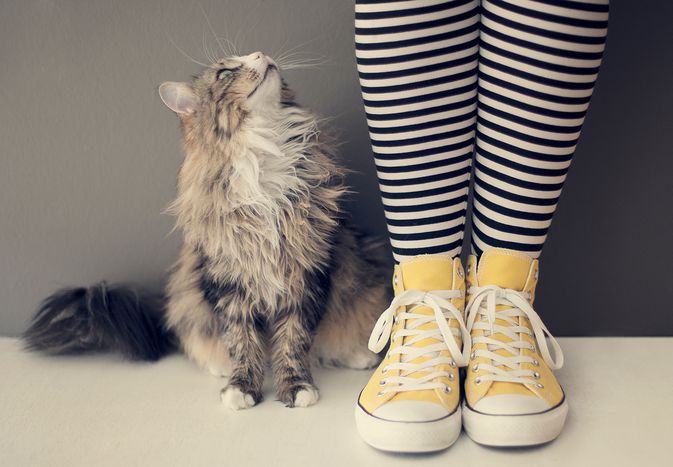
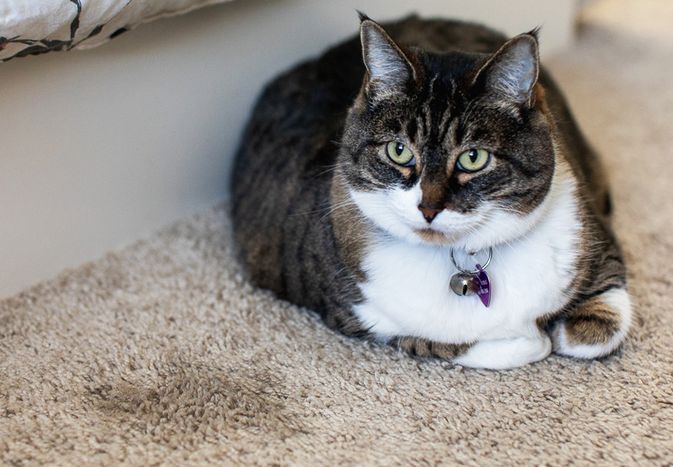
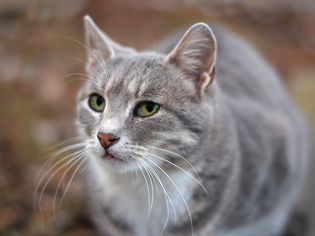
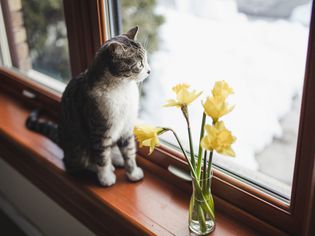
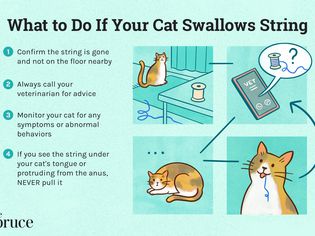
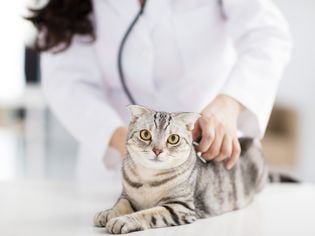
Comments on "Toyger: Cat Breed Profile, Characteristics & Care" :